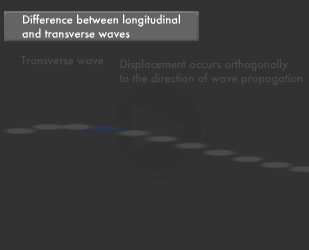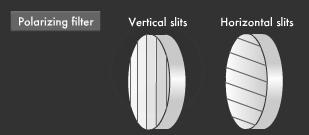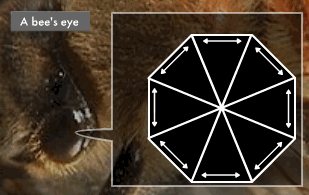Canon Science Lab
Why Do Water Surfaces Shine?
Water surfaces shine but do not reflect light evenly like mirrors. Why do water surfaces seem to glimmer?
Natural light combines various sources of light, each with different wavelengths, amplitudes and propagation directions. Even light with an identical wavelength, amplitude and propagation direction may have a different direction of vibration. Light having a main component with some specific direction of vibration is called polarized light.
A water surface more intensely reflects light with horizontal polarization than with vertical polarization. Our eyes see the strong horizontally polarized light. The glimmering results from the synergy of the light intensity fluctuations from the water surfaces.
Sound and Light Are Both Waves, but They Work Very Differently
Both sound and light are waves. They have wavelengths and amplitudes. Yet each is a completely different type of wave. For a start, sound waves cannot be transmitted without a vibrating medium. Within a vibrating medium, such as air, both sparse and dense portions of sound are transmitted. On the other hand, a light wave is transmitted in a vacuum-without a medium-going with waves of electric and magnetic fields. Sound and light feature different wave shapes, too. A sound wave is longitudinal; the directions of propagation and vibration are the same. A light wave is transverse, the propagation direction being orthogonal to the directions of vibrations. Polarization occurs with only transverse waves.

Light Polarizes because It Is a Transverse Wave
A transverse wave has a plane of vibration, or a plane that indicates a vibration direction. (A longitudinal wave does not have this.) There can exist many directions of vibration in one plane of vibration. As a result, there are many waves with different directions of vibration, even if they share the same wavelength and propagation path. Polarization occurs when the directions of vibration concentrate in a certain direction.

Polarization proves that light is a transverse wave. You can confirm polarization with a simple test like the one in the diagram below. The vibration of light from a light source can be multidirectional. If you guide light through equally spaced vertical slits, only light that vibrates vertically can pass through. (The state of polarized light in a certain linear direction is called "linear polarization.") If light, after passing through vertical slits, is transmitted into horizontal slits, then you see darkness on the other side, as no light can pass through. A polarizing filter acts like a combination of these slits. Polarizing filters are commonly used with single-lens reflex (SLR) cameras.
Bees Understand the Sky's Polarization
After buzzing around flowerbeds for honey, bees can return unerringly to their hives. This is because bees use sunlight as a compass. Bees sense the sun's polarization to confirm the sun's position and, therefore, the direction in which to fly. The sun's polarization is based on the direction from which one looks at the sun and the sun's height in the sky. The eyes of bees are actually arrays of multiple single eyes. Each eye has eight light receptors, and each receptor is coated with a polarizing filter that allows light with different directions of polarization to pass through.

A bee thus senses polarization as it reflects in a certain direction. We believe that not only bees, but also many other insects use this method to determine the sun's direction.
